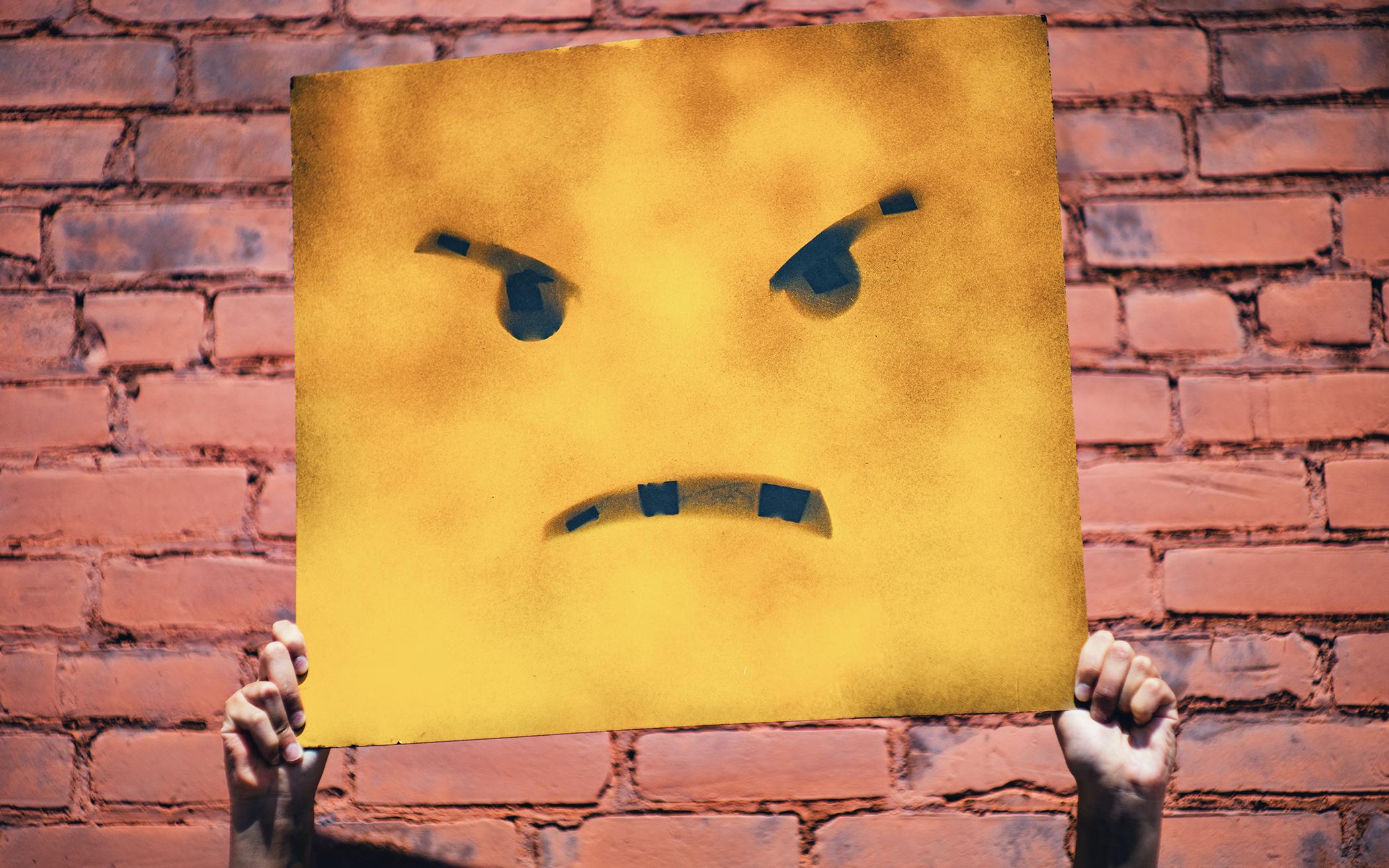It may come as a surprise to you to learn that excessive anger or rage is not a characteristic you were born with. Although anger, as one of the five primary human emotions (anger, sadness, joy, fear, guilt), is just as much a part of us as our five senses are, rage or wrath, described by Christian theologians as one of the seven deadly sins (wrath, sloth, pride, greed, envy, gluttony, lust), is not. And there you have it in a nutshell: anger is a normal and at times necessary emotion; rage is a deadly sin.
Anger can also be a horrible thing—like a force of nature. Anger can flash like lightning; it can obliterate like a blizzard; it can overwhelm like a flood. It seems as if anger is often bad and destructive and therefore best avoided. But is there a legitimate place for white-hot anger? If so, how do we manage our anger, and when do we let it flash? Can it even be “managed,” or do we simply suppress anger in the hope that it will go away if we ignore it?
Add to that the stresses created by the new normal of mask wearing, distancing, and isolating due to COVID-19. This virus seeks to infect all people worldwide and has led to hundreds of thousands of deaths, particularly among older people, those with compromised immune systems, and especially those with preexisting respiratory conditions. With the fear generated by this virus, a new fury—COVID rage—has joined other angers such as road rage. Clearly we must sort through the different feelings we experience, and we must navigate negative emotions in a way that is both instructive and constructive.
If we believe with Paul that there is a way toward contentment in all circumstances, then surely in our time that journey begins with understanding the different angers we feel and how we can release, discharge, or manage this created emotion.
Anger Energy
One thing anger does is provide energy for action. Anger energy needs to be discharged. If it cannot be discharged safely, it does not disappear. It will be stored in a person’s body, in one’s conscious or subconscious memory. It can then be discharged safely, either through a challenge (e.g., running a race) or by projecting onto someone we deem to be “safe” (i.e., someone who will not retaliate).
When anger energy gets stored, it turns bitter and will begin to attack the self, most often by creating feelings of depression—that is, the experience of sadness coupled with the bitterness created by stored anger. This is the worst thing anyone can do with anger. Stored anger is psychologically painful and debilitating. It becomes a weight that creates a paralysis and a sense of hopelessness—the very opposite of anger energy, which can lead to constructive action or clear the air between two people.
It is of course true that those who feel helpless and powerless are most often in danger of internalizing legitimate anger and turning it on themselves in the form of depression. It is healthier to find a scapegoat to blame and on which to vent your anger than it is to internalize anger energy that cannot be discharged or cleansed. A good example of safely scapegoating one’s anger is given in Matthew 21:18-19. In this passage Jesus is hungry. He goes to the fig tree in hopes of some fruit. When the fig tree doesn’t provide food for him, his anger flares (unfairly) toward this innocent tree, and Jesus lets that anger flash via a curse on the tree, which then dies. This is safe scapegoating.
COVID rage is an example of unsafe and sinful scapegoating. We blame our spouse or children, our boss, or God for hurting us, which helps us justify the anger we feel against them. We then let our stored anger energy flash to discharge the pressure. When we hurt an animal or other people or destroy someone’s possessions—when we wreak vengeance—we are purposely hurting someone or something “safe” to rid ourselves of anger caused by something we cannot change or control. It helps us feel justified when we scapegoat.
How to Discern
You might ask, “How can I decide whether my anger is legitimate rather than sinful? Isn’t all rage destructive?” But there is a difference: Legitimate anger focuses on the needs, honor, or defense of someone else, whereas sinful rage is in defense of oneself.
Notice Matthew 21:12-13. Here Jesus’ anger also flashes, but this time on behalf of the marginalized (the blind, lame, and poor). Jesus clears the temple courts of its commercial activity, overthrowing tables and chasing out merchants selling small animals and birds for sacrifice to those who have come to worship God. His anger flashes in defense of the poor and for the honor of God. Jesus declares that the temple courts should be a place of prayer for the benefit of the sick and the marginalized, not a marketplace for the benefit of local businessmen.
It is reasonable to assume that Jesus, at this point nearing his suffering and death on the cross, is under stress. He knows what lies ahead for him, and he is utterly alone in that knowledge. He knows the hosannas and adulation that will be poured out soon are nothing but a prelude to his torture and death.
With hindsight we know that for us this is good news. Because Jesus walked the road of obedience through his torture, death, and resurrection, and because Jesus sent the Holy Spirit to help us to follow the risen Lord who is now King of kings, we, like Jesus, can let our own anger flash in appropriate ways on behalf of those who are marginalized or unjustly oppressed. Like Jesus, we can speak up and use the anger energy we feel to respond to the cries of those targeted by systemic injustice—to be the voices that shine a light on privilege, sexism, and marginalization of the poor and the differently abled, that hear the voices of those who are denied inclusion at the table because of gender or sexual identity issues where they alone must change before they are welcome to join the rest of us at the banquet of our Lord.
It is this kind of anger, expended on behalf of others, that is a “righteous anger.” It can be a strongly felt energy, as potent as deadly rage, but instead of sin it is “righteous” because it is anger used to right a wrong on behalf of a neighbor.
Normal Anger vs. Destructive Rage
But what about ordinary angers we all experience that have to do with day-to-day interactions with spouses, children, friends, church families—in short, anger that needs to be understood and managed in the normal exercise of life, love, work, and play? How do we give a voice to the anger we might on occasion feel toward those we love?
It might be helpful to distinguish between anger that functions normally and a violent anger that rages destructively. Just because voices are raised and strong opinions are expressed and accompanied by strong feelings on both sides does not mean that something is wrong. A good argument can bring clarity to viewpoints and can clear the air.
All people, Christians included, must learn to manage strong emotions. Unchecked anger that builds into a state of rage can do an untold amount of damage to our spouses or children, to extended family members, to colleagues and church family, and of course to ourselves. When we’ve learned patterns of anger that hurt others, when we channel softer emotions like sadness or self-accusing emotions like guilt and shame into anger because anger is familiar and more comfortable, then we are at risk of having our anger flare up into rage—or quietly smolder as bitterness only to fly into a rage when we least expect it. So how do I get rid of rage and learn to keep my anger in check?
Learning to do this—or unlearning our anger habits—is not a simple process. Being full of wrath and learning how to experience and manage normal anger takes commitment. It is a bit like having to learn a new language while also having to forget a secret language full of curses and condemnations. To embark on this course of study takes commitment, a dedication to practice. It helps to ask someone you trust to take this journey of unlearning and relearning with you.
Three Principles
If deadly rage is part of what you struggle with, the following three principles might be of help. The first principle is: I must take responsibility for my anger, stop blaming others, and stop believing I am a helpless victim.
Even if you were victimized as a child and the anger you still carry because of that victimization was entirely justified, you must decide that this legitimate anger of the past has now become something hurtful in the present. It hurts those who are close to you when you get triggered and feel stressed enough to lash out at someone unfairly. You also end up hurting yourself. Stored anger is bitter and heavy, and there’s always the danger of it becoming depression, which is even more debilitating.
The second principle is that I must learn to understand the triggers from my past that still create anger in the present.
This part of the journey might best be undertaken with the help of a therapist who can journey with you as you explore your history. If therapy is not available, turn to someone else you trust—an elder, a pastor, or a trusted and wise mentor.
If professional therapy is not affordable, use a well-written resource instead. The second edition of Anger Management for Dummies is an excellent course of study for self-therapy. The authors, Charles Elliott and Laura Smith, are both clinical psychologists well versed in Cognitive-Behavioral Therapy (CBT), which is the therapeutic approach most helpful for understanding what’s behind the thinking that fuels the rage you feel when you get triggered.
Be intentional in discovering what makes your anger flash, and learn techniques to cool down your anger before you allow it to damage a relationship with someone you love.
The third principle is that I must learn to forgive quickly and thoroughly when I feel anger moving toward rage.
Forgiveness is not a one-time proposition. In Matthew 18, when Peter asked Jesus how often forgiveness was required, Jesus basically said, “As often as needed.” This truth is foundational. It is much easier to rehearse one’s anger by internally replaying a perceived slight than it is to forgive. And, of course, what is rehearsed in thought slowly grows into feeling.
When anger energy begins to surge toward rage, it is completely counterintuitive to, at that very moment, forgive those in the present as well as those in the past who owe you your deserved anger. Rehearsing your own anger and justifying why you have a right to be angry feels much better than choosing to forgive the perceived wrong in another person. It takes courage and resolve to do something that feels painful and difficult. In the Lord’s Prayer Jesus encourages us to do this hard thing by tying his forgiveness of our sins securely to our forgiveness of our neighbor—that is, anyone we come in contact with.
Right up until his death, Jesus consistently modeled how to live a life in which even our enemies receive forgiveness that was not deserved. This releases not only the person who deserves our anger; it releases us from the burden of bitterness and the destruction of rage.
Shane Pennells, a filmmaker and writer who works with at-risk youth, wrote a short column for the weekly Ancaster News of Sept. 17, 2020, in which he likened destructive anger to a forest fire, which is “captivating and terrifying” and which will destroy the whole forest if left unchecked. But a “slow, controlled burn, while not as exciting, leaves fertile soil in its wake, with more life afterwards than before.” Pennells then describes how forgiveness “is not about releasing someone from the responsibility of their actions, but … about taking back the power that was taken from you.” In other words, forgiveness (love) in response to evil and destruction is more powerful than the power of our rage.
We need the power only forgiveness can give if we want to let righteous anger speak in response to injustice. We also need that power so that, using anger energy as a constructive vehicle, we can resolve the differences and irritations we all experience, not only at home and at church, but also as workers and citizens in the world. We need to learn to forgive quickly if we want to belong to that kingdom of peace, if we want to honor the King of kings even with our anger.
Discussion Questions
- How have you viewed anger in your life? How do you normally manage it?
- What are other examples of unsafe scapegoating?
- What are some generally known “triggers” for people, and how do we avoid them?
- How do we learn to forgive in spite of our anger?
About the Author
Judy Cook is a family therapist and a member of Meadowlands Fellowship CRC in Ancaster, Ontario.








